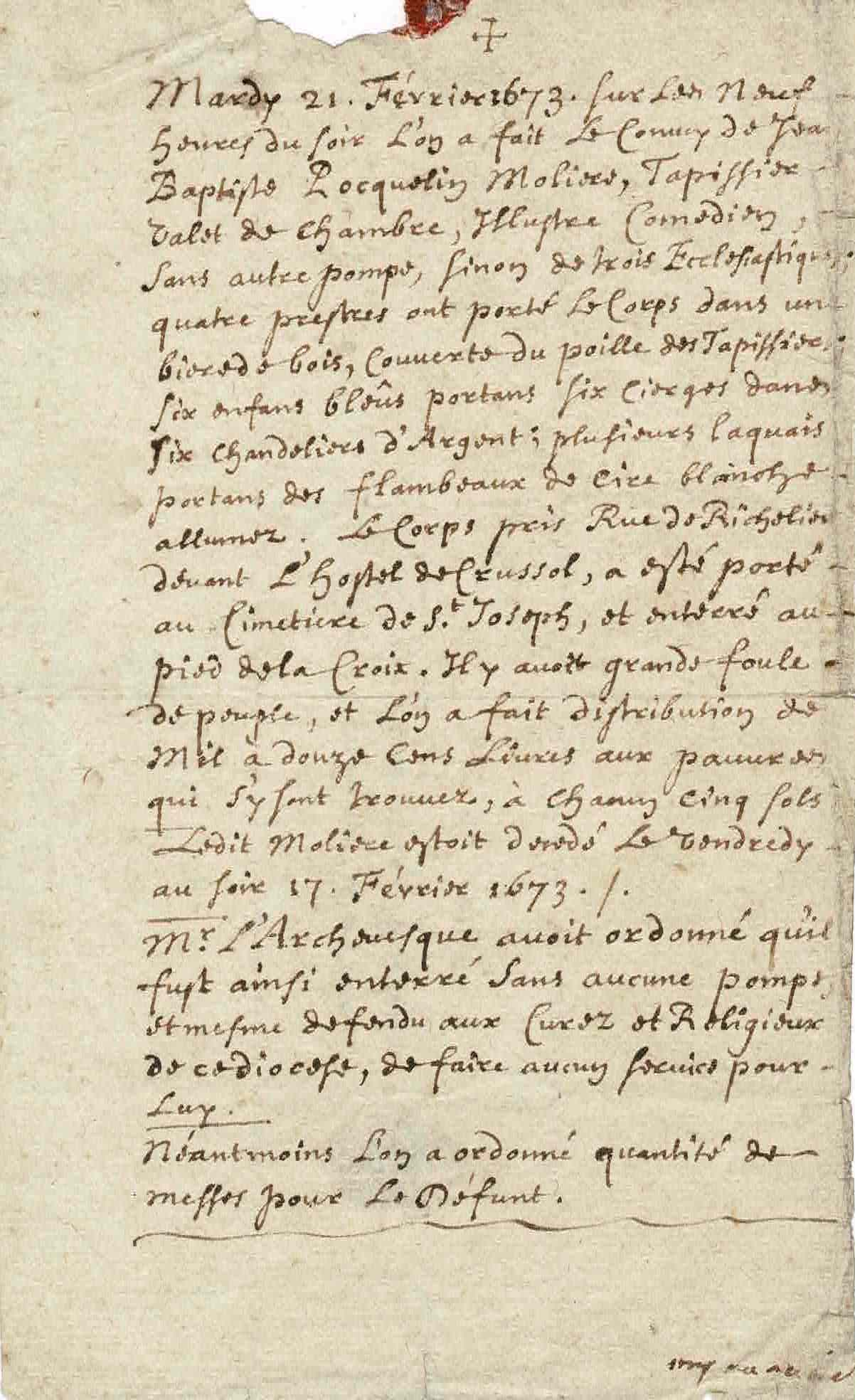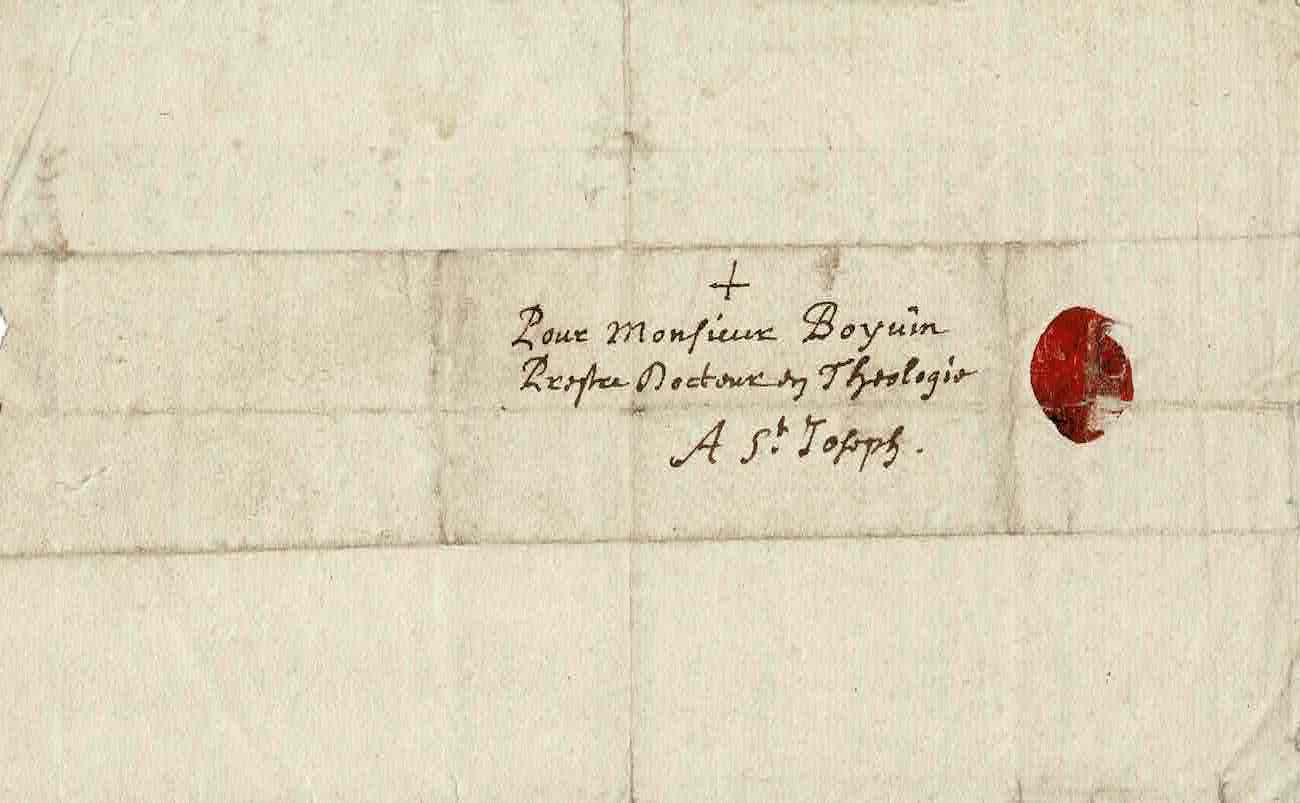[MOLIÈRE]. Account of the burial of Molière.
Circumstantial account of the burial of Molière supposedly addressed to Father Boyvin, “priest Doctor in Theology, at St Joseph.”
Handwritten letter, One page in-8°, address on the back: “For Monsieur Boyvin / Priest Doctor in Theology / AS t Joseph”, remains of wax seal.
February 1673 [Feuille de Conches? around 1840?]
______________________________________________
Tuesday February 21, 1673, at nine o'clock in the evening we made the convoy of Jean Baptiste Pocquelin Moliere, upholsterer valet, illustrious actor, without any other pomp, except three ecclesiastics, four priests carried the body in a beer of wood, covered with the upholsterers' hair, six blue children carrying six candles in silver candlesticks; several lackeys carrying lighted white wax torches; the body taken from rue de Richelieu in front of the Hostel de Crussol, was taken to the cemetery of St Joseph, and buried at the foot of the Cross. There was a large crowd of people, and from a thousand to twelve hundred pounds were distributed to the poor people who were there, five sols to each. The said Moliere died on Friday evening February 17, 1673.
Mr. Archbishop had ordered that he be buried in this way without any pomp and even forbidden the Curez and religious of this diocese from doing any service for him. Nevertheless, a number of masses were ordered for the deceased.
______________________________________________
The very form of the letter, offering only a detailed account of the funeral, without polite words or signature, like a handwritten short story, is surprising.
This letter was revealed for the first time by the autograph collector Benjamin Fillon in 1850 in his Historical and Artistic Considerations on Coins (note pp. 193-194). It was then published by Jules Loiseleur in Les Points obscurs de la vie de Molière (1877, pp. 350-351). The document, which became the property of Jules Taschereau (1801-1874), has remained in his descendants until today.
In 1972, in an article published in the Revue d'histoire du théâtre (IV, pp. 366-369), Madeleine Jurgens and Elizabeth Maxfield-Miller reproduced it with this note in commentary: “We had been quite reluctant to subject of this letter due to its discovery by Benjamin Fillon and the fact that we were then unable to find its trace. Since then, this letter, which is indeed from the 17th century, has been very kindly communicated to us by the current owner of the Jules Taschereau collection, of which it is part.
Despite the assurances given by the two eminent Molière scholars and the reproductions they provided, Roger Duchêne only cites this letter in a footnote to his biography of Molière (2006, p. 728) with many reservations.


